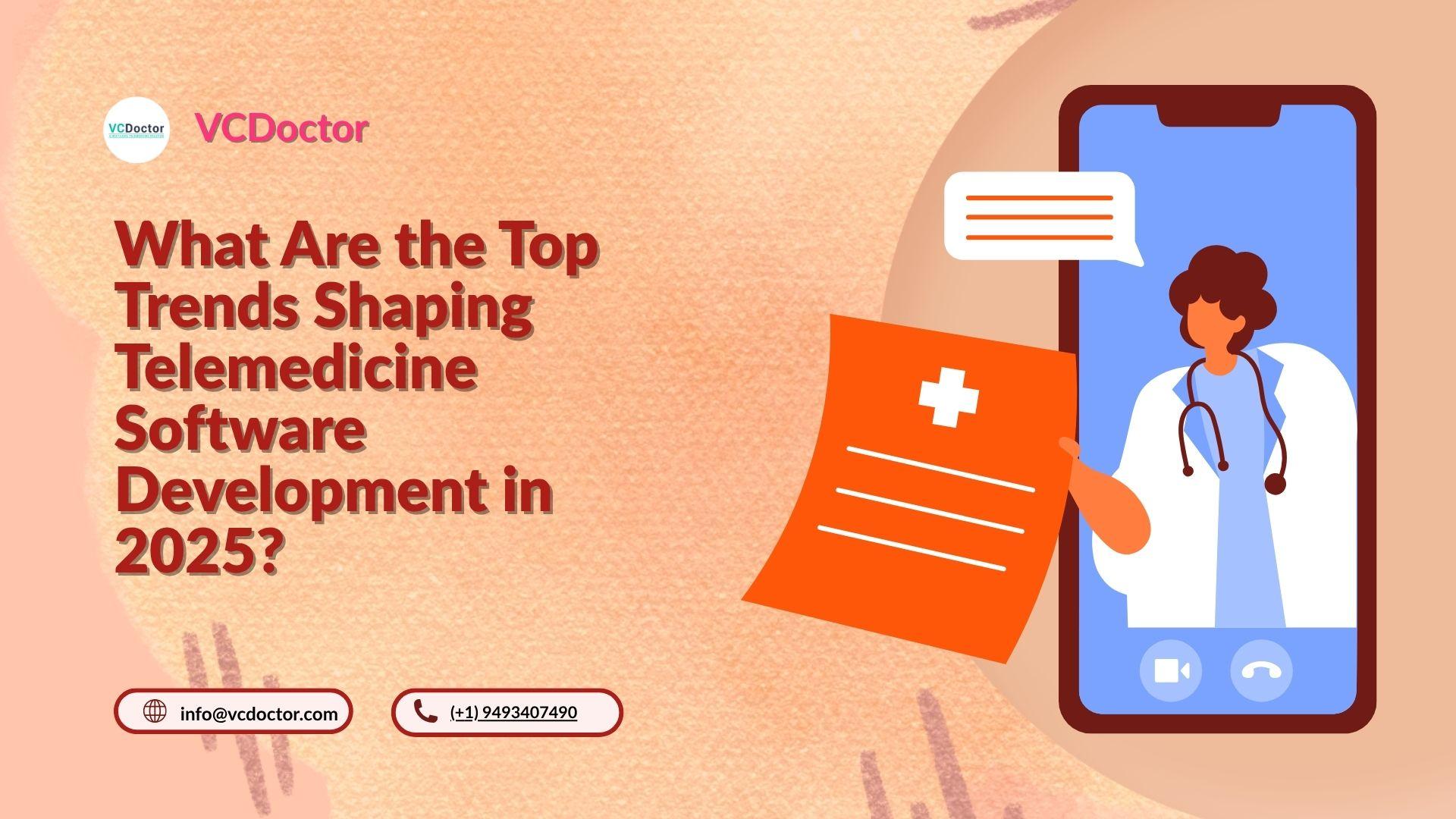Introduction: Why 2025 Is a Pivotal Year for Telemedicine
The telehealth boom triggered by the COVID-19 pandemic laid the groundwork for long-term virtual care strategies. However, 2025 marks a turning point as emerging technologies and shifting patient-provider expectations redefine how telemedicine platforms are built. According to McKinsey, over 38% of healthcare consumers now prefer virtual care, while 60% of healthcare organizations are increasing investments in custom telehealth solutions.
Telemedicine software development today is about more than video calls. It involves intelligent automation, seamless EHR integration, robust compliance, and adaptability across devices. This blog explores the top development trends shaping telemedicine in 2025, helping healthcare providers and CTOs make informed decisions.
1. AI and Predictive Analytics in Telemedicine Platforms
Artificial Intelligence (AI) is no longer a futuristic concept in virtual care. In 2025, AI is actively being used to:
-
Assist in remote diagnostics via image recognition and pattern detection
-
Automate patient triage through chatbots and symptom checkers
-
Personalize care plans using predictive analytics
Use Case: A chronic care management platform uses AI to predict diabetic complications based on real-time vitals and lifestyle data, alerting care teams proactively.
Stat: According to HIMSS, 72% of healthcare CIOs plan to expand AI-driven capabilities within their telemedicine platforms by the end of 2025.
2. End-to-End HIPAA and GDPR Compliance by Design
In the current landscape, telemedicine software must be compliant not just in storage, but across its entire workflow:
-
End-to-end encryption for patient data
-
Role-based access control for practitioners
-
Automatic session timeout and data purging
Compliance Features Checklist:
| Feature | Description |
|---|---|
| Data Encryption | AES-256 for stored data and TLS 1.3 for transmission |
| Access Control | Custom user roles and biometric verification |
| Audit Logging | Time-stamped activity records for legal traceability |
| Consent Management | Built-in digital forms and patient acknowledgment |
Developers are embedding compliance into architecture from the ground up to minimize legal risks and streamline audits.
3. Deeper EHR Integration with FHIR Standards
FHIR (Fast Healthcare Interoperability Resources) is becoming the gold standard for healthcare data exchange. In 2025, telemedicine platforms are expected to:
-
Seamlessly connect with popular EHRs like Epic, Cerner, and Athenahealth
-
Allow real-time syncing of patient history, prescriptions, and lab results
-
Support clinician workflows like SOAP notes and order entry directly from the telehealth interface
Use Case: A cardiology clinic integrates its telehealth platform with Epic, reducing charting time by 40% and minimizing duplicate entries.
Read Also: Best Telemedicine Software Providers
4. Cross-Platform and Device-Agnostic Development
Patients now access care through various devices—smartphones, desktops, tablets, even smart TVs. Developers are using technologies like React Native and PWAs to ensure platform independence.
Why It Matters:
-
Improves accessibility for elderly and low-income users
-
Reduces development costs with shared codebases
-
Increases patient retention with consistent UX
Stat: A 2024 Pew Research study found 81% of patients aged 18–45 use mobile devices for healthcare communication.
5. White-Label Solutions vs Custom Development
As demand grows, healthcare providers are choosing between white-label platforms and fully custom builds.
| Criteria | White-Label | Custom Development |
| Time to Launch | 2–4 weeks | 3–6 months |
| Custom Features | Limited | Fully Tailored |
| Compliance Control | Shared | Full Ownership |
| Cost | Lower upfront | Higher, long-term ROI |
When to Choose What:
-
White-Label: Best for startups or clinics needing fast deployment
-
Custom: Ideal for hospitals, specialty practices, or enterprise-grade systems
6. Telemedicine for Hybrid and Value-Based Care Models
In 2025, providers are embracing hybrid care—combining in-person and virtual interactions within the same care plan.
Key Focus Areas:
-
RPM (Remote Patient Monitoring)
-
Tele-rehab and post-surgical follow-ups
-
Behavioral health integrations
Use Case: A physical therapy center integrates CPT code 99214 billing into its telehealth platform, enabling reimbursement for extended virtual consultations.
7. API-First Ecosystems for Modular Scalability
An API-first development approach allows telemedicine software to evolve without full reengineering. Popular APIs include:
-
Billing APIs: Integrate with insurance and payment gateways
-
eRx APIs: Enable digital prescriptions to pharmacies
-
Lab APIs: Pull lab reports in real-time
Diagram: Example API-First Telemedicine Architecture
-
Core App ↔ EHR API ↔ Billing API ↔ Pharmacy API ↔ Analytics Engine
This modular design empowers healthcare systems to expand features based on future needs.
Conclusion: Adapting to the New Era of Virtual Healthcare
From AI to modular APIs, 2025's telemedicine landscape demands forward-thinking software development. Clinics, hospitals, and startups must align with these trends to ensure scalability, compliance, and patient satisfaction.
If you're ready to embrace modern telemedicine software development, our experts can help you build a solution tailored to your workflow, specialty, and growth goals.
FAQs: Real Provider Questions About Telemedicine Software Development
Q1. How long does it take to build a custom telemedicine platform in 2025?
A: Between 3–6 months, depending on integrations, compliance, and user roles.
Q2. Is telemedicine software development viable for small clinics?
A: Yes—especially with white-label or MVP-first approaches to reduce time and cost.
Q3. How secure are modern telehealth systems?
A: With encryption, access control, and audit logs, today's systems exceed most compliance standards.
Q4. What tech stack is recommended for scalable telemedicine platforms?
A: MERN, Flutter, AWS, and integration-ready APIs for EHR, labs, and payments.
Author Bio
Sanjeev Agrawal is a healthcare technology strategist and founder of VCDoctor. With over 10 years in custom telemedicine software development, he helps healthcare providers scale securely and compliantly. Connect on LinkedIn.



